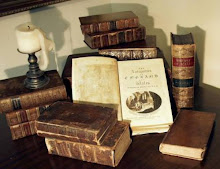So to the next book that we read completely: Vermeer: A View of Delft, by Anthony Bailey. Yes, our interests run beyond books, to other arts like painting (Vermeer and Modigliani), and music (Texas and Beatles), and photography (Steiglitz and Cameron), and sculpture (Claudel and Rodin). Mr. Bailey has an extensive background in Dutch history, and he uses it to flesh out this biography of a man of whom so little is known.
Many details about the life of Johannes Vermeer (1632-1675) that have come down to us today are from business records. His activities can be traced through the history of the Guild of St. Luke, recorded births and deaths, and a great deal of financial transactions. About the inner man, though, almost no evidence has been found beyond the thirty-five paintings attributed to him. Though the quantity of his work is small for a master, his achievements raise him in stature. As this is not a book about painting, the examinations of his works are mostly limited to what they might tell us about the artist.
In Marcel Proust's novel In Search of Lost Time, Albertine is asked whether or not she saw the Vermeers when she was in The Hague. She thinks they are a family, and replies that she did not. Though our two dear readers may not know it, you likely have seen some of the Vermeers, without ever having visited The Hague. Have you played the classic Parker art auction game Masterpiece? Have you seen or read any of the recent film and fiction treatments by Peter Webber or Tracy Chevalier, among others? Have you drank Vermeer Dutch Chocolate Cream Liqueur? We had seen some of his work without really knowing, and our first explicit introduction to the artist came from the 1990 Jon Jost film All the Vermeers in New York.

The Girl With a Pearl Earring is our favorite. Mr. Webber used Scarlett Johansson to reproduce this painting marvelously. Along with Study of a Young Woman, these are the only portraits Vermeer made, the subject extracted from the scenes Vermeer executed so well, and this the superior of the two. His control of light is suggested here with the back of the dress fading away, as well as the highlights on the earring, eyes, and lips. The blue, red, and gold are his standard colors. To single out one painting above all is difficult, though, for Vermeer achieves greatness in so many of his details: the reflections in A Girl Reading a Letter by an Open Window, and The Music Lesson; the milk and bread of The Milkmaid; the delicacy of the Woman Holding a Balance; the accuracy of the maps and the lustre of the lion's head finials; the threads of The Lacemaker; the Delft tiles.

Another of our favorites is The Art of Painting, which may give us all the information we need about how Vermeer worked. Hitler "liberated" this painting during the war and stored it away with the rest of his ill-gotten collection in a salt mine near Salzburg. One of his final orders from the Berlin bunker was to destroy the repository of paintings, which, thankfully, was disobeyed.
We enjoyed this book, and it opens the way for further examinations of the painter and his paintings. We will share other books on the subject in the future. A wonderful and amazingly detailed reference on Vermeer and his work can be found at Essential Vermeer.
The last trip Marcel Proust made out of his apartment was to see three Vermeers on display at a museum in the Tuileries. In his early years he also traveled to Delft and saw View of Delft. Though we are never told any details about the essay on Vermeer that Charles Swann is ocassionally writing, likely it would have included the epiphany described by the narrator and incorporated with Proust's own experiences in the sixth part of his novel. As in Mr. Jost's film, we quote in conclusion a passage from Proust that sends shivers down our spine:
All that we can say is that everything is arranged in this life as though we entered it carrying a burden of obligations contracted in a former life; there is no reason inherent in the conditions of life on this earth that can make us consider ourselves obliged to do good, to be kind and thoughtful, even to be polite, nor for an atheist artist to consider himself obliged to begin over again a score of times a piece of work the admiration aroused by which will matter little to his worm-eaten body, like the patch of yellow wall painted with so much skill and refinement by an artist destined to be forever unknown and barely identified under the name Vermeer.



No comments:
Post a Comment